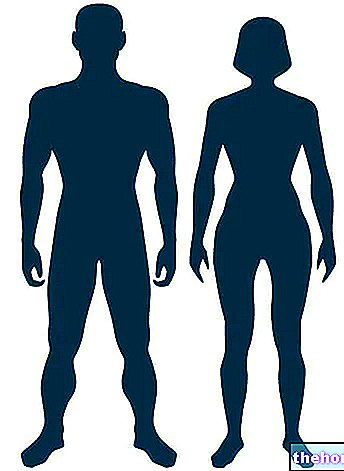What are Telangiectasias
Telangiectasias are harmless dilations of small blood vessels (venules, capillaries and arterioles), visible beyond the epidermis. Telangiectasias appear as superficial sinuous arborescences, with a bluish-red color, often a consequence of skin disorders of a degenerative inflammatory nature: not by chance , telangiectasias represent a frequent disorder in dermatoses.

Origin of the term
Curious is the etymology of the term "telangiectasia", which derives from the name attributed by the ancient Greeks to a visible lesion of the small blood vessels. Telos (end), angeion (jar), ektasis (dilation), or lesion / dilation of the end of the vessel = tele-ang-ectasia.
Incidence
Telangiectasias occur in men and women, with a female propensity; in general, the disorder is linked to "advancing age", but there are also cases of subjects affected by telangiectasias at a young age. In senescence, telangiectasias tend to be more evident: in fact, if in young subjects the diameter of the blood vessels involved is between 2 and 3 millimeters, in the elderly the dimensions can increase until they are associated with cerebral, pulmonary or arteriovenous fistulas. cardiac. Telangiectasias have a variable course over the years: their number and size may not only change, but the appearance of new telangiectasias is very probable.
Features
Telangiectasias manifest as microvarices that can take different forms: linear, circular, reticular, tufted, patchy or spider web (in this regard, telangiectasias can be confused with spider angiomas). Similarly, telangiectasias can take on different colors ranging from purple to blue and red. In addition, they may appear in slight relief (papules), with or without arborizations (branched arrangement of the vessels).
The lesions can affect not only the epidermis, but also the mucous membranes; they generally appear small, especially at the level of the face. Specifically, telangiectasias are often localized on the inner surface of the lips, in the nasal and lingual mucosa, on the gums, on the pinnae, on the palate; sometimes, the trunk, nails, fingers, soles of the feet and palms of the hands can also be affected.
Symptoms
Telangiectasias are normally asymptomatic venous malformations: vascular alterations that do not lead to any symptoms or pathological effects, although they involve an "evident alteration in the appearance of the skin". In addition to this, sometimes telangiectasias could cause itching, in these cases, it is good not to underestimate them and contact a doctor in order to exclude the presence of any pathologies not yet diagnosed.
In other cases, however, telangiectasias are related to bleeding, particularly if the lesions - of serious entity - affect the skin, mucous membranes and digestive system; nevertheless, it is very unlikely that such bleeding will cause death. the haemorrhages recur over time, and occur with a certain frequency, the affected subject could still present an anemic form (iron deficiency), even severe.
Causes
The causes that favor the onset of telangiectasias can be many: vasodilation, repeated inflammatory processes, genetic predisposition, hormonal changes (eg pregnancy) and atrophy of the skin tissues, contribute to delineate the etiopathological picture of telangiectasias.
However, in the majority of cases, telangiectasias represent the direct consequence of a vasodilation caused by a difficult and inadequate venous drainage.

Classification
Based on the clinical picture of telangiectasias, the following are distinguished:
- Telangiectasias caused by venous insufficiency: related to the slowing of venous blood flow, and to varices (affecting the feet, legs and thighs).
- Hormonal alteration telangiectasias: typical disorder of women during pregnancy, menopause or who take the contraceptive pill (mainly affecting the thighs).
- Varicose-reticular telangiectasias: they often represent the symptoms of venous insufficiency.
- Telangiectasias caused by capillary weakness: caused by excessive heat or cold, UV rays (mainly affecting the legs).
- Telangiectasias matting: telangiectasias occur as a consequence of surgical interventions or following the injection of sclerosing substances. Generally, they regress in a few months and no definitive therapies are necessary.
Finally, there are particular types of telangiectasia caused by genetic causes: this is the case of Osler-Rendu-Weber telangiectasia or hereditary hemorrhagic telangiectasia.
Osler-Rendu-Weber disease is an autosomal-dominant genetically transmitted disease, with lesions related to the alteration multiorgan blood vessels; it therefore affects many organs, such as the liver, the brain, the skin, the lungs and the gastro-enteric system. It generally manifests itself with epitaxis (blood leaking from the openings of the organism, an "externalized hemorrhage that originates from" indoor).
The underlying cause of haemorrhagic hereditary telangiectasias is represented by the mutation of three genes (Endoglin, ALK1, SMAD4). The alteration of the genes involves the manifestation of telangiectasias: based on the affected gene, the telangiectatic manifestation will present some clinical differences. resulting psychological and physical disturbances (use of drugs that counteract blood loss, embolization techniques to prevent the dramatic progression of the disease, hydration and hygiene of the mucosa, laser therapy).
Diagnosis

Associated pathologies
In some cases, telangiectasias can occur in association with various pathologies, of which they are sometimes one of the main symptoms. Among these, we remember:
- Couperose;
- Rosacea;
- Scleroderma;
- Actinic keratosis;
- Ataxia-telangiectasia (or Louis-Bar syndrome), a genetic disease characterized by the formation of oculo-cutaneous telangiectasias associated with immunodeficiency and cerebral ataxia;
- Xeroderma pigmentosum;
- Sturge-Weber syndrome, a rare congenital neurocutaneous disease characterized by the formation of small blood vessels in the face and eyes;
- Bloom's Syndrome, a rare genetic disorder of chromosomal breaks which is characterized by growth retardation and the appearance of telangiectatic facial erythema;
- Klippel-Trenaunay-Weber syndrome (or angio-osteohypertrophic syndrome), a rare congenital disease characterized by malformations of the blood vessels in a limb.
Treatment
Of course, the treatment to be carried out depends on the type of telangiectasias from which the patient suffers and, above all, on the cause that triggered them.
Therefore, if telangiectasias represent the symptom of some underlying disease, the treatment should be directed to the cure of the primary disorder that gave rise to these microvariables.
Some affected individuals, after consulting a doctor, use laser therapy, one of the most successful treatments for the elimination of telangiectasias. In addition to the laser, always after medical consultation, it is also possible to resort to treatments with high intensity pulsed light, with radiofrequency, or sclerotherapy.
The most serious consequence deriving from telangiectasias refers to epitaxis; in this regard, the treatment involves tampons, electrocoagulation, embolization and the use of topical haemostats, which represent possible measures to stop bleeding.
Considering, then, that in some affected subjects the loss of blood is of such a consistency as to cause anemia and iron deficiency, it is sometimes advisable to have blood transfusion and an "iron supplementation."
Summary
To fix the concepts ...
- Telangiectasias caused by venous insufficiency;
- Hormonal alteration telangiectasias;
- Varicose-tericular telangiectasias;
- Telangiectasias caused by capillary weakness;
- Telangiectasias matting;
- Hemorrhagic hereditary telangiectasias.
- Couperose;
- Rosacea;
- Scleroderma;
- Actinic keratosis;
- Ataxia-telangiectasia;
- Xeroderma pigmentosum;
- Sturge-Weber syndrome;
- Bloom syndrome;
- Klippel-Trenaunay-Weber syndrome.




























